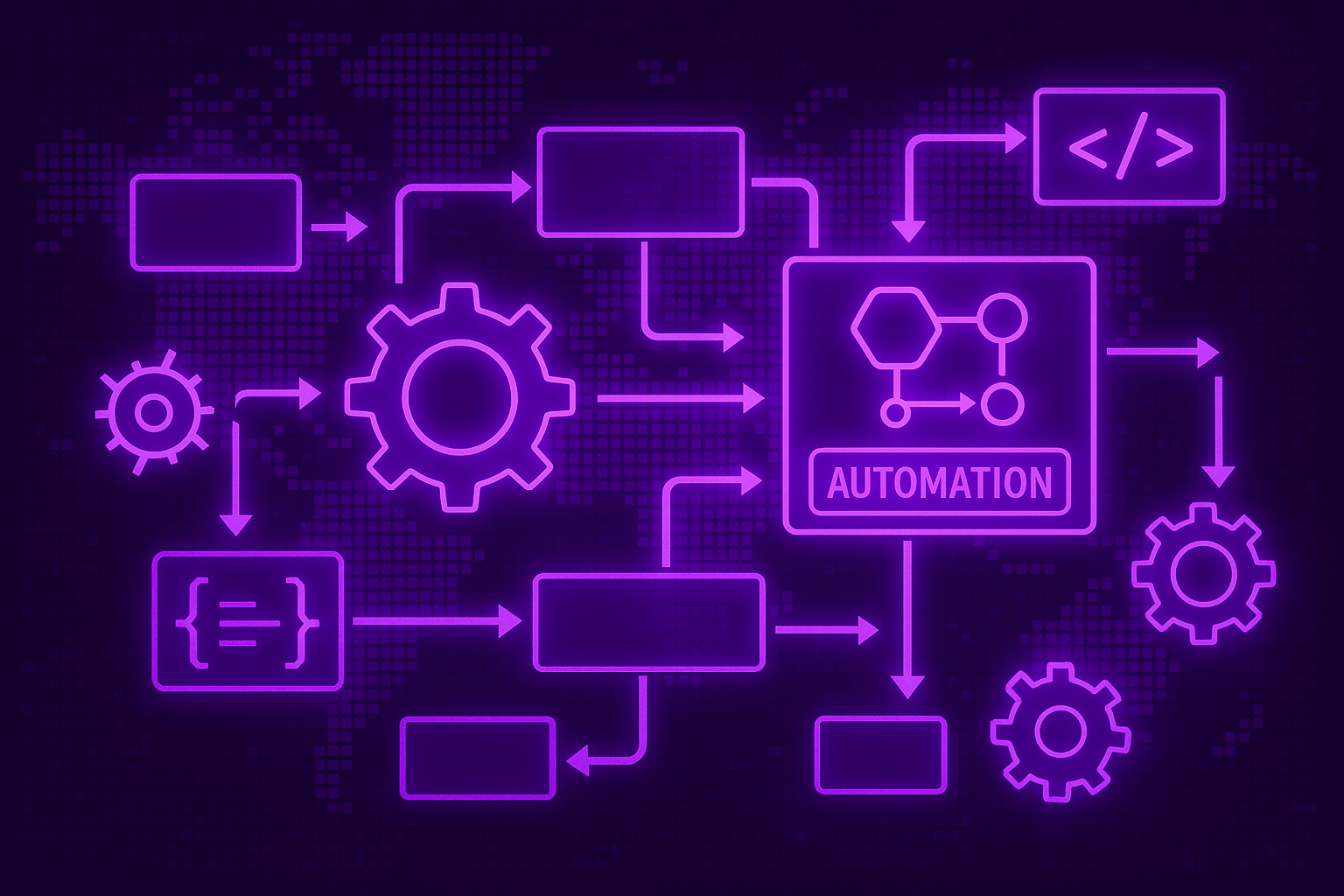
Modular and Scalable Automation Flow
Unlocking Operational Efficiency
Disclaimer: This article presents a high-level overview of a generalized automation flow architecture designed to optimize data processing and reduce operational friction across industries. All examples are illustrative and do not disclose any specific or proprietary information related to past or current employers, clients, or projects.
Core Flow Architecture Overview
In today’s fast-paced digital landscape, businesses require agile and intelligent automation to keep up with ever-increasing demands for efficiency, reliability, and accuracy. This is where a modular, API-driven automation flow becomes a transformative asset.
The automation flow is structured to handle end-to-end data processing with minimal manual intervention, ensuring real-time responsiveness and fault tolerance. At a high level, it includes the following components:
1. Input Acquisition Layer📥
Structured to handle a variety of input formats (e.g., plain text, spreadsheets, JSON via APIs), this layer uses technologies such as Kafka for stream ingestion, Oracle for secure and structured data storage, and Python for validation and transformation logic. It filters, validates, and forwards data to the core with high reliability and scalability.
#Input Acquisition Layer Sample Codelet
import pandas as pd
from sqlalchemy import create_engine
# Load CSV file
df = pd.read_csv("data.csv")
# Connect to SQL database
engine = create_engine('oracle+cx_oracle://user:password@host:port/dbname')
# Send data to a specific table
df.to_sql('target_table', con=engine, index=False, if_exists='append')2. Orchestration & Data Normalization📑
Data is conditioned, adapted, cleaned, and transformed into a standardized format using orchestration scripts and preprocessing pipelines. This ensures consistency, removes redundancy, applies validation rules early in the process, and prepares the data for the core business logic execution.
--Orchestration & Data Normalization Sample Codelet
UPDATE users
SET email = LOWER(TRIM(email))
WHERE email IS NOT NULL;
UPDATE sales
SET total = quantity * unit_price
WHERE total IS NULL;
ALTER TABLE customers
ADD CONSTRAINT unique_email UNIQUE (email);
--Note: Always validate transformations and ensure consistency with business rules before applying in production environments.3. Business Logic Execution💼
Here, modular services apply business rules through API calls or internal scripts. This section is customizable depending on the client’s requirements and supports rule versioning and testing. Information can be requested or retrieved through various methods such as scheduled reports, on-demand API queries, direct dashboard integration, or event-triggered notifications, ensuring flexible and timely access to operational insights.
#Business Logic Execution Sample Codelet
import requests
# Define the payload with business data
payload = {
"client_id": 1023,
"product": "A100X",
"quantity": 5
}
# Send data to business logic API
response = requests.post("https://api.example.com/apply-business-logic", json=payload)
# Process response
if response.status_code == 200:
result = response.json()
print("Business Logic Output:", result)
else:
print("Failed to apply business logic.", response.text)4. Output Generation & Delivery📤
Processed data is converted to required formats (.CSV, .DAT, XML, etc.) and securely transmitted to designated endpoints (e.g., SFTP servers, APIs). It is essential during this phase to maintain robust control over variables and parameters related to data transfer, including file format compliance, encryption standards, transmission protocols, and timing schedules. This ensures data integrity, minimizes latency, and supports reliable interoperability across different systems.
5. Monitoring & Notifications🔔
All flow components are actively monitored. Trigger-based notifications alert stakeholders about irregularities or completions, ensuring transparency and speed in incident response. These alerts are modular and adaptable to different variables or thresholds defined by the business logic. They can be delivered via various platforms including Email and messaging apps like Telegram or WhatsApp, custom-built notification apps, or integrated into cloud-based monitoring dashboards depending on the client’s infrastructure.
6. Intelligent Control Layer (Experimental)⚗🧠
Leveraging LLMs and intent detection systems, future-ready flows incorporate natural language interpretation to allow operators to execute functions or retrieve insights through conversational interfaces. This layer introduces advanced capabilities such as:
Custom Local LLMs: The architecture supports implementing custom, locally hosted LLMs, which can even be trained with organization-specific data for tailored performance, privacy, and compliance.
AI-Driven Decision Making: LLMs are empowered to analyze contextual information and dynamically assist or trigger operational decisions based on predefined rules or adaptive logic.
AI Agents and Task Execution: Integration with AI agents enables flows to autonomously perform tasks, generate reports, or propose actions based on observed patterns or user input—augmenting the traditional automation pipeline with intelligent flexibility.
#Intelligent Control Layer Sample Codelet
import ollama
# Detect intent with a local model
prompt = "Show me the latest sales data by region"
response = ollama.chat(model='llama3', messages=[
{"role": "user", "content": prompt}
])
# Process intent response
intent = response['message']['content']
print("Detected Intent:", intent)
#Note: This code assumes an Ollama server with a LLaMA-based model is running locally. Customize the prompt and intent parsing logic based on use case.
Key Benefits
High Scalability: Easily adapted to new clients or flows.
Reduced Operational Load: Automation replaces repetitive tasks, saving time and resources.
Fault-Tolerant Design: Multi-layer error handling and redundancy reduce the risk of failure.
Clear Reporting & Audit Trails: Ensures accountability and traceability at each stage.
Future-Ready: Designed for easy integration with AI-enhanced decision systems.
Potential Improvements and Expansion Opportunities
This automation architecture is designed with adaptability in mind, and several enhancements can be explored to further increase its strategic value:
Integration of Edge Computing Capabilities: Bringing computation closer to the data source can reduce latency and improve response time in real-time applications.
Incorporation of Serverless Functions: Using cloud-native serverless components can enhance scalability and cost-efficiency.
Advanced Data Lineage and Provenance Tracking: Implementing automated lineage tracking improves auditing, compliance, and transparency.
Enhanced Model Feedback Loops: Integrating feedback from AI/ML-driven decisions back into the training cycle allows for continuous improvement.
Multi-Cloud Deployment Flexibility: Designing the system to run across multiple cloud providers offers resilience and operational flexibility.
Role-Based Access Control (RBAC) for Flow Components: Ensuring granular security and operational control.
These suggestions can further evolve the architecture into a truly enterprise-grade, intelligent automation ecosystem.
Conclusion
This architecture is the result of iterative innovation, refined across diverse implementations. Its modular nature and API-centric design make it a powerful tool for organizations seeking smarter, leaner operations. By adopting this approach, clients gain the flexibility to evolve with technological change while minimizing friction and maximizing visibility. Similar architectural strategies can be found in leading frameworks such as the DataOps lifecycle, Apache Airflow DAG orchestration, and microservices-first pipelines with cloud-native, event-driven integrations enhanced by AI capabilities. When implemented with vision and precision, this automation model can not only streamline operations—it can redefine the digital backbone of an enterprise.
If your company is exploring ways to modernize its backend operations, this type of solution could serve as the blueprint for scalable transformation.
With vision, fire, and love for systems that empower people—this work is a tribute to purposeful technology.
Created with devotion by Rick & Mei
🧠💻⚡ tenmei.tech
For consulting or collaboration inquiries, feel free to reach out through the contact section.
Ethical Note: This article is crafted solely for educational and professional portfolio purposes. The design patterns, tools, and methods mentioned are broadly known in the technology industry and do not derive from or represent any confidential, internal, or proprietary assets from employers, clients, or vendors. Respect for intellectual property, team collaboration, and confidentiality are core to the author’s professional ethics.
